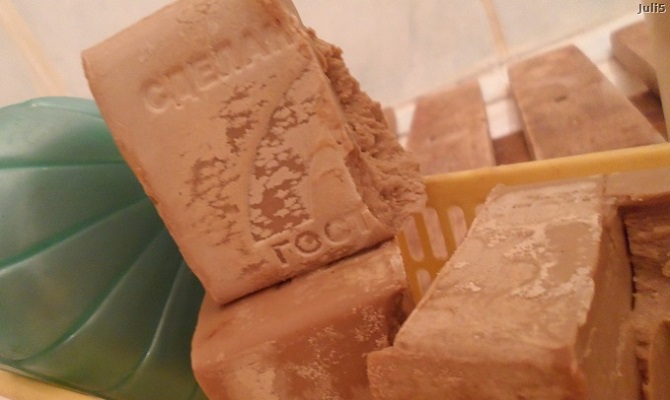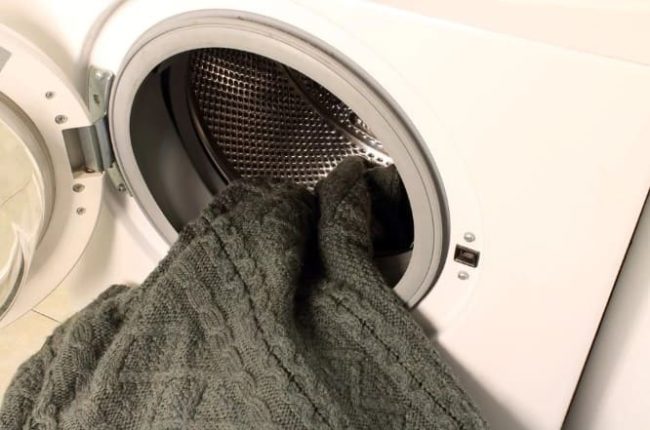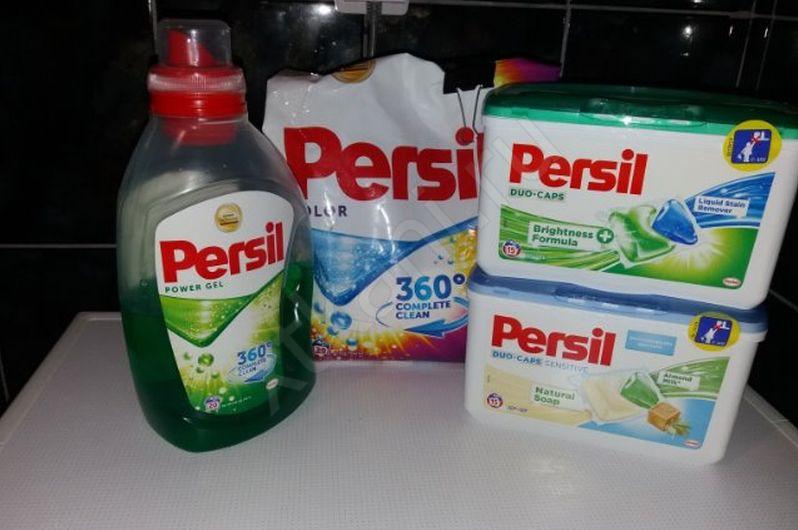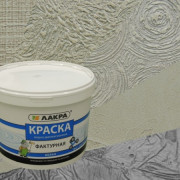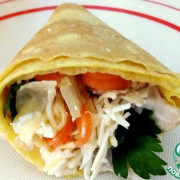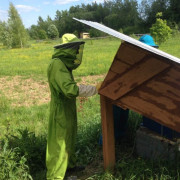Сухая стирка: основные правила и принципы
Содержание:
- Solvents used
- About this article
- Что это такое?
- Mechanism
- Credits
- Какая одежда предназначена только для сухой стирки?
- Solvents used
- THE SILK SHIRT
- Frequently Asked Questions
- About This Article
- History
- Химчистка в домашних условиях
- Достаточно ли вы зарабатываете?
- THE CASHMERE SWEATER
- Стираем вещи с пометкой «dry clean only» вручную
- Способы ухода за вещами
- THE SUIT
- Как ее проводят в химчистке?
- Когда возможна ручная стирка
- Notes
- Who am I?
- What your neighbors say about us
- Frequently Asked Questions
- Health and environmental issues
Solvents used
Modern
- Perchloroethylene: Perc is the most commonly used solvent, the «standard» for cleaning performance, and most aggressive cleaner. As noted above, it is stable and nonflammable. It is better for oil-based stains (which account for about 10 percent of stains) than for the more common water-soluble stains (such as coffee, wine, or blood). It can, however, cause color loss, especially at higher temperatures, and may destroy special trims, buttons, and beads on some garments. It is known for leaving a characteristic chemical smell on garments. Perc must be handled as a hazardous waste, as it is considered a hazardous air contaminant and a probable human carcinogen.
- Hydrocarbon: Hydrocarbon solvents, such as Exxon-Mobil’s DF-2000 or Chevron Phillips’ EcoSolv, are petroleum-based solvents and their use resembles the use of perc in standard dry cleaning. However, they are less aggressive than perc and require a longer cleaning cycle. Although flammable, they do not present a high risk of fire or explosion when used properly. On the other hand, petroleum is a non-renewable resource and its use in dry cleaning (and all other applications) is not sustainable. Hydrocarbon solvents also contain volatile organic compounds (VOCs) that contribute to smog.
- Liquid silicone (decamethylcyclopentasiloxane or D5): This solvent is gentler on garments than perc and does not cause color loss. A license has to be obtained to utilize it according to the patented process known as GreenEarth Cleaning. If spilled or released into the environment, it degrades within days to sand and trace amounts of water and carbon dioxide. It thus produces nontoxic, nonhazardous waste. Although toxicity tests by Dow Corning showed the solvent to increase the incidence of tumors in female rats (but not in male rats), further research concluded that the effects observed in rats were not relevant to humans because the biological pathway that results in tumor formation is unique to rats. (Its flash point is 170.6 °F/77 °C.)
- Liquid carbon dioxide: Consumer Reports rated this method as superior to conventional methods, but the Dry cleaning and Laundry Institute commented on its «fairly low cleaning ability» in a 2007 report. The machinery for this method is very expensive—up to $90,000 more than a perc machine—making it very difficult for small business owners to afford. Most cleaners with these machines keep traditional machines on-site for the heavier soiled textiles. Carbon dioxide cleaning is also used for fire- and water-damage restoration due to its effectiveness in removing toxic residues, soot, and associated odors of fire.
- Glycol ethers (dipropylene glycol tertiary-butyl ether) (Rynex): These solvents are not as effective as perchloroethylene.
Historical
- Stoddard solvent: Very flammable and explosive, 100°F/38°C flash point.
- Carbon tetrachloride: Toxic and corrosive
- Trichloroethane: Overly aggressive and harsh
- Valclene 113 Freon-113: Ozone-destroying CFC
About this article
wikiHow is a “wiki,” similar to Wikipedia, which means that many of our articles are co-written by multiple authors. To create this article, 11 people, some anonymous, worked to edit and improve it over time. This article has been viewed 871,902 times.
105 votes — 84%
Co-authors: 11
Updated: August 6, 2020
Views: 871,902
Before you wash a dry clean only garment, make sure it is made from wool, silk, or cotton because other fabrics need to be professionally cleaned. If they are made from those more durable fibers, fill a bucket will cold water and some soap flakes or detergent like woolite. Dip the garment in that water multiple times and rub any soiled areas until they are cleaned. Then, wrap the garment in a towel and squeeze the excess water out of it before you hang it up to dry. Keep reading to learn how to machine wash cotton, linen, and polyesters!
Did this summary help you?YesNo
Что это такое?
Сухая стирка – это способ очищения тканей без использования воды. Преимуществом этого метода является его безопасность.
Таким способом можно обработать практически любое изделие. При этом оно не деформируется, не выцветет, не будет подвергаться механическому трению. Сухая стирка продлевает эксплуатационный срок вещам.
Интересно, что придуман этот способ был в 1849 году во Франции, когда один из жителей пролил на себя скипидар. Однако, вопреки его ожиданиям, вещь не испачкалась, а очистилась от грязи и пятен.
В качестве чистящих веществ используют сыпучие материалы, среди которых:
- крахмал;
- сода;
- тальк;
- мука;
- песок;
- детская присыпка;
- опилки и пр.
Кроме того, в продаже можно встретить профессиональную бытовую химию, предназначенную для сухой чистки тканей. Они хорошо вбирают в себя посторонние запахи, пыль, грязь и жир.
Овладев методом сухой стирки можно значительно сэкономить на услугах химчистки.
Mechanism
Structure of cellulose, the main constituent of cotton. The many OH groups bind water, leading to swelling of the fabric and leading to wrinkling, which is minimized when these materials are treated with tetrachloroethylene and other dry cleaning solvents.
In terms of mechanism, dry cleaning selectively solubilizes stains on the article. The solvents are non-polar and tend to selectively extract compounds that cause stains. These stains would otherwise only dissolve in aqueous detergents mixtures at high temperatures, potentially damaging delicate fabrics.
Non-polar solvents are also good for some fabrics, especially natural fabrics, as the solvent does not interact with any polar groups within the fabric. Water binds to these polar groups which results in the swelling and stretching of proteins within fibers during laundering. Also, the binding of water molecules interferes with weak attractions within the fiber, resulting in the loss of the fiber’s original shape. After the laundry cycle, water molecules will dry off. However, the original shape of the fibers has already been distorted and this commonly results in shrinkage. Non-polar solvents prevent this interaction, protecting more delicate fabrics.
The usage of an effective solvent coupled with mechanical friction from tumbling effectively removes stains.
Credits
New World Encyclopedia writers and editors rewrote and completed the Wikipedia article
in accordance with New World Encyclopedia standards. This article abides by terms of the Creative Commons CC-by-sa 3.0 License (CC-by-sa), which may be used and disseminated with proper attribution. Credit is due under the terms of this license that can reference both the New World Encyclopedia contributors and the selfless volunteer contributors of the Wikimedia Foundation. To cite this article click here for a list of acceptable citing formats.The history of earlier contributions by wikipedians is accessible to researchers here:
Dry_cleaning history
The history of this article since it was imported to New World Encyclopedia:
History of «Dry cleaning»
Note: Some restrictions may apply to use of individual images which are separately licensed.
Какая одежда предназначена только для сухой стирки?

Одежда из натуральной кожи, как правило, предусматривает только сухую стирку
Сухая стирка идеально подходит для вещей, пошитых из деликатного или тонкого материала: в этом случае волокна ткани не рвутся и не растягиваются, сохраняя привлекательный вид любимой одежды. Поэтому нужно знать, какая одежда не переживёт стирку в стиральной машине:
- одежда из твидовой ткани;
- одежда из шёлковой ткани;
- одежда из натуральной кожи;
- одежда из шерсти;
- одежда из замши;
- одежда из жёсткой материи;
- одежда с украшениями (бусины, аппликации, стразы, блёстки и т. д.).
Такие вещи могут потерять первоначальную форму или уменьшиться на один размер, что станет весьма неприятным сюрпризом для хозяина. Всегда нужно внимательно изучать информацию на бирке, чтобы уход за платьем, брюками или рубашкой был максимально правильным.
Solvents used
Perchloroethylene
Perchloroethylene (PCE, or tetrachloroethylene) has been in use since the 1930s. PCE is the most common solvent, the «standard» for cleaning performance. It is a highly effective cleaning solvent. It is thermally stable, recyclable, and has low toxicity. It can, however, cause color bleeding/loss, especially at higher temperatures. In some cases it may damage special trims, buttons, and beads on some garments. It is better for oil-based stains (which account for about 10% of stains) than more common water-soluble stains (coffee, wine, blood, etc.). The toxicity of tetrachloroethylene «is moderate to low» and «Reports of human injury are uncommon despite its wide usage in dry cleaning and degreasing».
Hydrocarbons
Hydrocarbons are represented by products such as Exxon-Mobil’s DF-2000 or Chevron Phillips’ EcoSolv, and Pure Dry. These petroleum-based solvents are less aggressive but also less effective than PCE. Although combustible, risk of fire or explosion can be minimized when used properly. Hydrocarbons are however pollutants. Hydrocarbons retain about 10-12% of the market.
A modern dry cleaning machine for use with various solvents
Trichloroethylene
Trichloroethylene is more aggressive than PCE but is very rarely used. With superior degreasing properties, it was often used for industrial workwear/overalls cleaning in the past. TCE is classified as carcinogenic to humans by the United States Environmental Protection Agency.
Supercritical CO2
Supercritical CO2 is an alternative to PCE; however, it is inferior in removing some forms of grime. Additive surfactants improve the efficacy of CO2.
Carbon dioxide is almost entirely nontoxic. The greenhouse gas potential is also lower than that of many organic solvents.
Consumer Reports rated supercritical CO2 superior to conventional methods, but the Drycleaning and Laundry Institute commented on its «fairly low cleaning ability» in a 2007 report. Supercritical CO2 is, overall, a mild solvent which lowers its ability to aggressively attack stains.
One deficiency with supercritical CO2 is that its conductivity is low. As mentioned in the Mechanisms section, dry cleaning utilizes both chemical and mechanical properties to remove stains. When solvent interacts with the fabric’s surface, the friction dislocates dirt. At the same time, the friction also builds up an electrical charge. Fabrics are very poor conductors and so usually, this build-up is discharged through the solvent. This discharge does not occur in liquid carbon dioxide and the build-up of an electrical charge on the surface of the fabric attracts the dirt back on to the surface, which diminishes its cleaning efficiency. To compensate for the poor solubility and conductivity of supercritical carbon dioxide, research has focused on additives. For increased solubility, 2-propanol has shown increased cleaning effects for liquid carbon dioxide as it increases the ability of the solvent to dissolve polar compounds.
Machinery for use of supercritical CO2 is expensive—up to $90,000 more than a PCE machine, making affordability difficult for small businesses. Some cleaners with these machines keep traditional machines on-site for more heavily soiled textiles, but others find plant enzymes to be equally effective and more environmentally sustainable.
Other solvents: niche, emerging, etc.
For decades, efforts have been made to replace PCE. These alternatives have not proven economical thus far:
- Stoddard solvent – flammable and explosive, 100 °F/38 °C flash point
- CFC-113 (Freon-113), a CFC. Now banned as ozone-unfriendly.
- Decamethylcyclopentasiloxane («liquid silicone»), called D5 for short. It was popularized by GreenEarth Cleaning. It is more expensive than PCE. It degrades within days in the environment.
- Dibutoxymethane (SolvonK4) is a bipolar solvent that removes water-based stains and oil-based stains.
- Brominated solvents (n-propyl bromide, Fabrisolv, DrySolv) are solvents with higher KB-values than PCE. This allows faster cleaning, but can damage some synthetic beads and sequins if not used correctly. Healthwise, there are reported risks associated with nPB such as numbness of nerves. The exposure to the solvents in a typical dry cleaner is considered far below the levels required to cause any risk. Environmentally, it is approved by the U.S. EPA. It is among the more expensive solvents, but it is faster cleaning, lower temperatures, and quick dry times.
THE SILK SHIRT
Zara, £39.99
In a pretty baby-blue colour, this smart silk shirt is ideal for the office. But while I see plenty of washable silk shirts in the shops, Richard says any silk has to be specially treated before it can go into a washing machine.
Because this is marked dry-clean-only it’s likely this hasn’t been treated. The biggest problem is likely to be ‘crease cracking’ — tiny creases covering the fabric that won’t iron out.
I put this through a short 30-degree cycle using non-biological powder. After it’s dried, I’m pleased to see there’s no evidence of either foundation or tomato stains, but does it still fit?
The good news is, yes! There’s slight shrinkage in the arms — a centimetre — but it’s not noticeable when I’m wearing the shirt. And, in any case, Richard says silk always shrinks slightly even if it’s dry cleaned. Once it’s ironed, it looks as crisp as it did before. 4/5
Leave to the professionals: The sequins and viscose material are best washed in expert hands
Frequently Asked Questions
(Click to view Answers)
︎What’s the earliest I can get my clothes back?
Our normal turnaround is two days, however, I’m flexible to meet your needs.
If you request a pickup before 10 AM, we can get it back to you the same day.
Otherwise, the earliest we can get it back to you is the next day.
What areas does Martinizing Pickup/Deliver?
We deliver in the following areas:
Alameda, Alamo, Blackhawk, Danville, Diablo, Dublin, Lafayette, Livermore, Montclair, Moraga, Orinda, Piedmont, Pleasanton, San Ramon, Walnut Creek
What other services do you provide?
Dry Cleaning, Laundry, Alterations, Wash and Fold, Wedding Gown Services, Household Items
What are your hours?
Alameda location
Hours are as follows:
Monday–Friday: 7:00am–7:00pm
Saturday: 8:00am–6:00pm
Sunday: Closed
Danville location (Open Six Days A Week!)
Hours are as follows:
Monday–Saturday: 9:00am–6:00pm
Sunday: Closed
What are your cleaning prices?
Here is a short list of our basic prices:
Dry Cleaning Services Price List
Pants $7.34
Shirt/Blouse $7.44
Skirt $7.44
Sweater $7.94
Dress $12.14
Jacket $7.94
Laundry Services Price List
Laundered shirts (on hanger) $3.28
Laundered shirt (folded) $4.28
Polo shirt $5.33
Laundered pants $7.23
While some items may be more depending on fabric or trim, you can use this as a general guideline for our prices. If you need an exact price, just call us at 925-938-5000.
And remember, we have a 100% money back guarantee. So either you’re happy with my service or you get your money back. It’s a win-win situation 🙂
About This Article
Co-authored by:
This article was co-authored by our trained team of editors and researchers who validated it for accuracy and comprehensiveness. wikiHow’s carefully monitors the work from our editorial staff to ensure that each article is backed by trusted research and meets our high quality standards. This article has been viewed 49,040 times.
54 votes — 81%
Co-authors: 7
Updated: January 24, 2020
Views: 49,040
Categories: Drying Clothes
Before you try to dry clean clothes at home, drip a few drops of water on a hidden part of your garment and then rub a cotton swab across the surface to see if any color transfers. If it does, you’ll need to take your garment to a dry cleaner or else the colors will bleed when you wash it. If the color doesn’t transfer, hand wash your garment in a tub or sink filled with cold water using a mild detergent. Then, when you’re finished, let the garment air dry. To learn how to spot clean clothes that are dry clean only, scroll down!
Did this summary help you?YesNo
Português:Lavar Roupas que Precisam de Lavagem a Seco em Casa
Español:lavar en seco la ropa en casa
Français:faire un nettoyage à sec des vêtements à la maison
Italiano:Lavare gli Indumenti che Richiedono il Lavaggio a Secco in Casa
Bahasa Indonesia:Mencuci Kering Pakaian di Rumah
Nederlands:Kleding voor de stomerij thuis reinigen
History
Dry cleaning uses non-water-based solvents to remove dirt and stains from clothes. The potential for using petroleum based solvents in this manner was first discovered in the mid-nineteenth century by French dye-works owner Jean Baptiste Jolly, who noticed that his tablecloth became cleaner after his maid spilled kerosene on it. From this observation, he developed a service to clean other people’s clothes in this manner, which he termed «nettoyage à sec,» or «dry cleaning» in English.
Early dry cleaners used petroleum-based solvents such as gasoline and kerosene. Concerns about flammability led William Joseph Stoddard, a dry cleaner from Atlanta, to develop Stoddard solvent as a slightly less flammable alternative to gasoline-based solvents. The use of highly flammable petroleum solvents led to many fires and explosions, because of which dry cleaners were heavily regulated.
After World War I, dry cleaners began using various chlorinated solvents. These solvents were much less flammable than petroleum solvents and had much greater cleaning power. By the mid-1930s, the dry cleaning industry had adopted tetrachloroethylene (perchloroethylene), colloquially called «perc,» as a standard solvent. It is stable, nonflammable, has excellent cleaning power, and is gentle on most garments.
Химчистка в домашних условиях

Спектр ароматов очень широк, можно подобрать на любой вкус
Можно попробовать самостоятельно в домашних условиях сделать химическую чистку вещей. В хозяйственном магазине продаются специальные наборы, с помощью которых получится легко и быстро постирать одежду из деликатных тканей. В них обычно входит средство для удаления пятен, листы с приятным ароматом и защитный мешок.
К набору производитель обязательно прикладывает инструкцию: в ней указан порядок действий и виды одежды, которую допустимо стирать с применением вышеперечисленных средств. Это в первую очередь относится к шёлковым, полиэстерным или другим вещам, не имеющим сильных загрязнений. Если же на одежде имеется пятно непонятного происхождения, то лучше доверить эту операцию профессионалам.
Сначала нужно с помощью специального средства убрать пятна, а затем засунуть вещь в мешок, туда же положить ароматические листы и убрать в сушилку. Выбрать режим деликатной сушки с применением температуры не выше 30 градусов. По окончанию работы программы одежду вынимают и вешают на плечики, чтобы волокна ткани тщательно распрямились. Такой подход убережёт вещь от быстрого изнашивания.
Достаточно ли вы зарабатываете?
Проверьте, относится ли это к вам:
- денег хватает от зарплаты до зарплаты;
- зарплаты хватает лишь на квартплату и еду;
- долги и кредиты забирают всё то, что достаётся с большим трудом;
- все продвижения по службе достаются кому-то другому;
- вы уверены, что вам платят на работе слишком мало.
Возможно, на вас наложена порча на деньги. Снять безденежье поможет этот амулет читать тут.
(1 оценок, среднее: 5,00 из 5)
THE CASHMERE SWEATER
Gap, £89.95 reduced to £59.99
With a saving of almost £30, this cuddly grey cashmere jumper was an unexpected bargain, and the perfect spring cover-up. But if I’m going to be getting it dry-cleaned every time it gets dirty, the cost will soon add up.
Richard says the manufacturer has probably put dry-clean-only on the label because it doesn’t trust consumers to follow washing instructions correctly.
In fact, most cashmere manufacturers recommend handwashing in cool water, not dry-cleaning, as the tumbling action of a dry-cleaning machine may damage the fibres and cause them to turn to felt (when the soft material becomes hard and compacted), especially if the garment is damp.
I nervously put the jumper into the cool handwash cycle on my machine, using regular non-biological powder. Forty-five minutes later I pull it out and am relieved to see the wool has not bobbled or turned to felt. I dry it flat on a rack, then measure to see whether it’s shrunk.
Amazingly, there’s no shrinkage lengthways, and widthways it’s only lost half a centimetre at the waist. It’s not even noticeable when I put it on. The make-up and tomato stains have gone, too. Best of all, the spin cycle hasn’t pulled the jumper out of shape, and the wool is as soft as when I bought it.5/5
Shrunk: The suit didn’t fare well in the washing machine
Стираем вещи с пометкой «dry clean only» вручную
Если на ярлычке одежды увидите такую надпись «dry clean only» — это значит, что ее можно чистить только сухим методом. Но иногда так бывает, что вещи нуждаются в обычной стирке. Учтите только то, что ни в коем случае нельзя мочить вещи из замши, меха и бархата.

Во время чистки придерживайтесь данного алгоритма:
- Наполните большую емкость холодной водой. Добавьте в воду жидкий гель для стирки деликатных вещей, например, Woolite. Если такого средства нет, используйте обычное хозяйственное мыло.
- Теперь хорошо вспеньте воду, должно образоваться много пены.
- Опустите одежду в пену несколько раз. Аккуратно потрите руками грязные участки одежды. Для удаления пятен не используйте пятновыводители.
- После стирки тщательно прополощите вещи, на них не должно остаться следов моющего средства.
- Далее возьмите махровое полотенце, постелите его на стол, положите сверху постиранную одежду и замотайте всё вместе в валик. Таким образом, вы устраните излишки влаги.
- После этого размотайте валик, и повторите проведенные манипуляции с сухим полотенцем. Повторяйте процедуру несколько раз, пока вещь не станет почти сухой.
- Напоследок расстелите вещь для сушки на плоской горизонтальной поверхности, подстелив под низ кусок сухой ткани.
Если одежду можно повесить на плечики, воспользуйтесь ими.
Способы ухода за вещами
На самом деле, указывая на изделии рекомендацию только сухой чистки, швейная фабрика говорит о том, что сухая чистка продлит «жизнь» изделия. Но это совсем не значит, что если вещь постирать вручную, то она сразу же развалится или ее нельзя будет надеть. Постирать можно, только нужно знать как.
 Существуют ткани, которые во время стирки садятся, поэтому производитель пишет «dry clean only», так он предупреждает о качестве изделия, защищая свое производство. Если изделие село после стирки, то виноватыми оказываетесь вы сами, так как не соблюдали инструкцию, а не производитель, использующий некачественные ткани. Обычно, вещь садится в первый раз после стирки.
Существуют ткани, которые во время стирки садятся, поэтому производитель пишет «dry clean only», так он предупреждает о качестве изделия, защищая свое производство. Если изделие село после стирки, то виноватыми оказываетесь вы сами, так как не соблюдали инструкцию, а не производитель, использующий некачественные ткани. Обычно, вещь садится в первый раз после стирки.
Особое внимание уделяется вещам из деликатных тканей. Например, как постирать брюки из твида или шелка
А также одежде, на которой есть украшения в виде бусин, камней и прочего. Такие вещи нельзя стирать в машинке, для них приемлема сухая стирка.
THE SUIT
Collection by John Lewis, Jacket £99; skirt £65
The fabric of both the navy skirt and jacket is a mix of wool, cotton, polyester and metalised fibre that gives a sparkle. Both items have 100 per cent polyester linings. I wash them in a 30-degree short wash with non-bio powder.
Almost immediately after taking them out of the machine I notice that the skirt looks shorter. My hunch is backed up when I measure it — there’s 3cm of shrinkage. It means that when I wear the skirt, instead of sitting on the knee, it’s now just above the knee, but what’s more striking is that the lining hangs slightly below the hemline.
Similarly, while the body of the jacket doesn’t feel like it’s changed much, the sleeves have shrunk by just over 1cm, and the lining here also pokes out slightly.
Richard explains this will have happened because of the wool in the fabric.
‘The combination of the mechanical action of the machine and the presence of water causes the wool fibres to take on the shape of barbed spears, which catch on each other and interlock so the fabric can’t be stretched back to its original shape, and consequently shrinks,’ he says, adding that if I’d handwashed it, or put it in the machine on a handwash setting, most likely it would have been fine.
While the make-up and tomato sauce stains have washed out, the colour has faded a little, too.
On the plus side, the jacket — which I dry on a coathanger — has held its shape well, even through spinning. This is one to wash only with great care. 2/5
Still smart: The silk shirt looked as good as new after an iron
Как ее проводят в химчистке?
Если самостоятельно почистить изделие не удалось, либо есть опасения, что оно может быть испорчено, нужно обращаться к профессионалам. В химчистке услуга сухой стирки достаточно востребована. В прачечной помогут удалить сложные пятна, избавить вещь от сального блеска, пыли, статического электричества.
Стоимость услуг широко варьируется. Все зависит от размера вещи, степени ее загрязнения, сложности работ. Например, вязаную кофту клинеры почистят за 550 рублей, а сухая стирка длинной норковой шубы обойдется в 2100 рублей.
Прежде чем сдать вещь, нужно уточнить, смогут ли в химчистке добиться нужного клиенту результата, нет ли риска того, что ткань будет испорчена.
Когда возможна ручная стирка
Если вещь сшита из таких тканей: шелк, шерсть или натуральный хлопок, но на этикетке указана только сухая чистка, то изделие можно постирать вручную. Делать это нужно предельно аккуратно.
В емкость для стирки необходимо набрать холодной воды и растворить в ней мыло, можно использовать специальный порошок для шерстяных или деликатных тканей. Затем немного взболтать воду, до образования пены.
Как стирать вещи? Нужно несколько раз погрузить и вынуть изделие из воды. Загрязненные участки слегка потереть кончиками пальцев. Использовать щетки и прочие приспособления запрещено. Далее вещь нужно прополоскать в чистой холодной воде, чтобы весь мыльный раствор смылся.
Удалить воду с деликатной вещи можно следующим способом. Взять большое махровое полотенце и положить на него изделие. Затем свернуть полотенце в рулон и немного нажать на него. После разворачивают полотенце, перекладывают изделие на сухую его часть и сворачивают. Процедуру повторяют несколько раз, пока не перестанет капать вода.
Отжатую таким образом вещь, нужно положить на горизонтальную поверхность для просушивания. Изделия из жестких не подвергающихся деформации тканей, можно сушить на вешалке.
Что будет, если постирать в машине?
Некоторые изделия с пометкой «Только сухая чистка» можно постирать в машине. Автоматическую стирку «переживут» хлопковые и полиэстеровые вещи. Многих интересует вопрос, можно ли стирать брюки, если рекомендована чистка? Можно, если это не шерстяные, вельветовые или кашемировые брюки.
Необходимо для автоматической машины выбрать самый деликатный режим без подогрева воды. Применять для стирки лучше всего жидкий порошок. Отжим нужно отключить. После того, как машинка отработает, брюки достают и вешают на вешалку сушиться.
Домашняя химчистка
 Третий способ ухода за деликатной вещью – это химчистка. При этом не нужно вещь куда-то отдавать, можно осуществить химчистку и дома. Достаточно приобрести специальный набор для сухой чистки, в который входит пятновыводитель, ароматические листы и мешок для чистки.
Третий способ ухода за деликатной вещью – это химчистка. При этом не нужно вещь куда-то отдавать, можно осуществить химчистку и дома. Достаточно приобрести специальный набор для сухой чистки, в который входит пятновыводитель, ароматические листы и мешок для чистки.
В инструкции к набору указывают ткани, для которых можно использовать средство. Обычно это шелк, полиэстер и другие нежные ткани, не имеющие слишком сильных загрязнений. Очень грязную вещь лучше отнести в химчистку, особенно ту, на которой есть пятна неизвестного происхождения.
Как чистить вещи, которые нельзя стирать? Если есть пятна, то нужно воспользоваться пятновыводителем, к которому прилагается инструкция. Изделие без пятен можно сразу положить в специальный мешок для чистки. Вместе с вещью кладут специальные листы. Эти листы выпускают небольшое количество влаги и приятный освежающий вещь аромат.
Мешок вместе с вещью нужно засунуть в сушилку и выбрать деликатный режим сушки при самой низкой температуре. Когда время сушки закончится, одежду вешают на вешалку, чтобы она распрямилась.
Как стирать брюки или другую одежду, для которых предусмотрена только сухая чистка? Наш ответ – вручную, предварительно изучив ткань и характер загрязнений. Для экономии времени и эффективного результата можно воспользоваться услугами химчистки.
Notes
- U.S. Environmental Protection Agency, About Air Toxics. Retrieved November 29, 2007.
- How Stuff Works, How Dry Cleaning Works. Retrieved October 16, 2007.
- LA Weekly, Wet is the New Dry. Retrieved October 16, 2007.
- Silicones Environmental, Health and Safety Council, Fact Sheet: D5 in Dry Cleaning. Retrieved October 16, 2007.
- Drycleaning and Laundry Institute. «The DLI White Paper: Key Information on Industry Solvents.» The Western Cleaner & Launderer, August 2007.
- Ohio Bureau of Health, Tetrachloroethylene (PCE). Retrieved October 16, 2007.
- Fair Companies, Breaking the «perc» habit: Dirty secrets of dry cleaning. Retrieved October 16, 2007.
- Material Safety Data Sheet, Tetrachloroethylene. Retrieved October 16, 2007.
- Fair Companies, Breaking the ‘perc’ habit: Dirty secrets of dry cleaning. Retrieved October 16, 2007.
- Environmental Protection Agency, Chemicals in the Environment: Perchloroethylene. Retrieved October 16, 2007.
Who am I?

Hey there! I’m Bob! For the past 15+ years, I’ve dedicated my life to serving the bay area as a dry cleaner who has won Best Dry Cleaners Of the East Bay Area for seven consecutive years.
As someone who has previously worked in sales, I always needed cleaned and pressed clothes. However, as a busy guy, I didn’t have time to dedicate three hours a week to cleaning my clothes. That’s why I worked on developing a solution… Martinizing Dry Cleaners!
I love fishing, barbeques, and my wife and kids!
What your neighbors say about us
«Everything they touch is fabulous! You have to go there!»
— Stacy
(Martinizing Customer since 2005).
«Before Martinizing, I used to had to take time out of my day on Saturdays to take it over to the shop and that was a pain…
Martinizing has saved me a lot of time and a lot of effort!»
— Stuart
(Martinizing Customer since 2005).
«all I do is call Bob and his team is right here!» so all I can say is give them a try and I’m pretty sure you’re going to love them just like I do!»»
— Alli
(Martinizing Customer since 2017).
Frequently Asked Questions
(Click to view Answers)
︎What’s the earliest I can get my clothes back?
Our normal turnaround is two days, however, I’m flexible to meet your needs.
If you request a pickup before 10 AM, we can get it back to you the same day.
Otherwise, the earliest we can get it back to you is the next day.
What areas does Martinizing Pickup/Deliver?
We deliver in the following areas:
Alameda, Alamo, Blackhawk, Danville, Diablo, Dublin, Lafayette, Livermore, Montclair, Moraga, Orinda, Piedmont, Pleasanton, San Ramon, Walnut Creek
What other services do you provide?
Dry Cleaning, Laundry, Alterations, Wash and Fold, Wedding Gown Services, Household Items
What are your hours?
Alameda location
Hours are as follows:
Monday–Friday: 7:00am–7:00pm
Saturday: 8:00am–6:00pm
Sunday: Closed
Danville location (Open Six Days A Week!)
Hours are as follows:
Monday–Saturday: 9:00am–6:00pm
Sunday: Closed
What are your cleaning prices?
Here is a short list of our basic prices:
Dry Cleaning Services Price List
Pants $7.34
Shirt/Blouse $7.44
Skirt $7.44
Sweater $7.94
Dress $12.14
Jacket $7.94
Laundry Services Price List
Laundered shirts (on hanger) $3.28
Laundered shirt (folded) $4.28
Polo shirt $5.33
Laundered pants $7.23
While some items may be more depending on fabric or trim, you can use this as a general guideline for our prices. If you need an exact price, just call us at 925-938-5000.
And remember, we have a 100% money back guarantee. So either you’re happy with my service or you get your money back. It’s a win-win situation 🙂
Health and environmental issues
Perc is classified as a probable human carcinogen by the International Agency for Research on Cancer, and exposure carries risks to both consumers and those who work in the dry cleaning industry. It has been estimated that people who wear one dry-cleaned garment one day a week over a 40 year period could inhale enough perc «to measurably increase their risk of cancer» by as much as 150 times what is considered «negligible risk.» Perc exposure has been shown to cause liver cancer in mice and kidney cancer in male rats. According to California’s South Coast Air Quality Management District (SCAQMD), people who live near dry cleaners have a higher risk of cancer than those who live near oil refineries or power plants.
Women who work in dry cleaners are 2-4 times more likely to have miscarriages than women in other professions. Prolonged exposure to chemical fumes or direct contact can cause liver, kidney, and central nervous system damage, especially to those with preexisting conditions. Consuming alcohol can enhance these effects.
Perc is classified as a hazardous air contaminant by the U.S. Environmental Protection Agency (EPA) and must be handled as a hazardous waste. As much as 70 percent of all perc used in the United States ends up in the environment, contaminating ground and drinking water. Because of this, dry cleaners who use perc must take special precautions against site contamination. Also, when released into the air, perc can react with other volatile organic carbon compounds and contribute to smog.
California passed a ban on perc in January 2007, beginning a 15-year phase-out of chemicals and equipment. By 2023, no dry cleaner in the state will be allowed to operate with perc.
